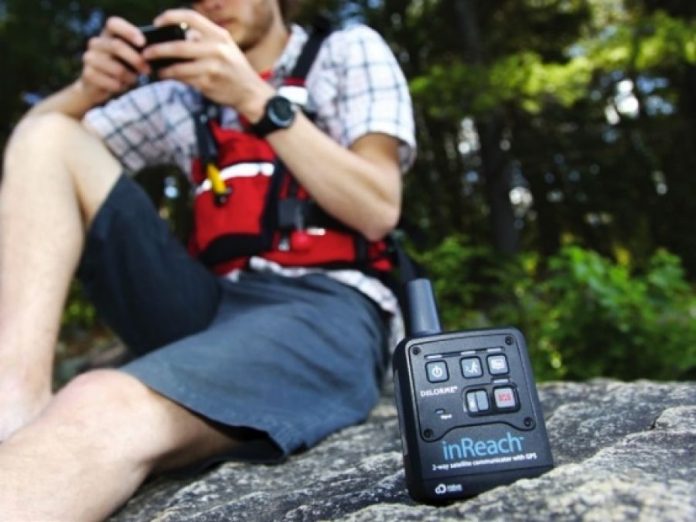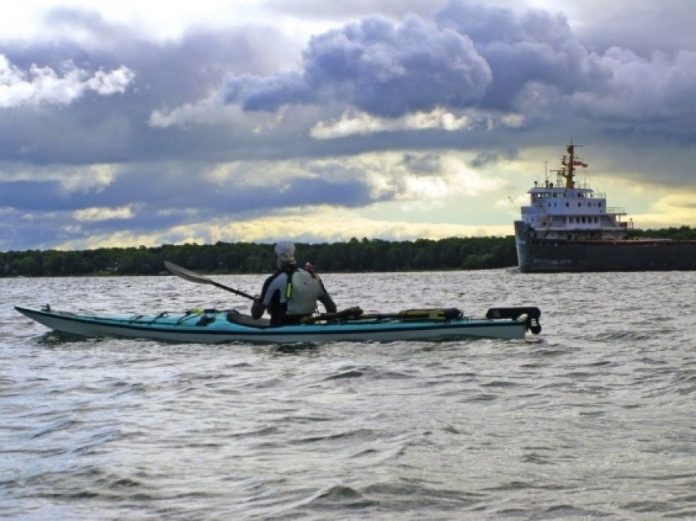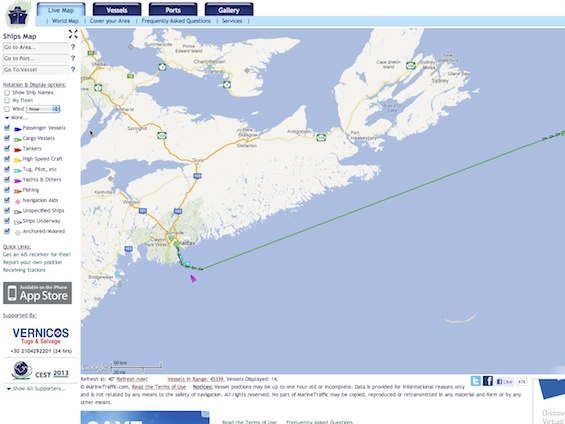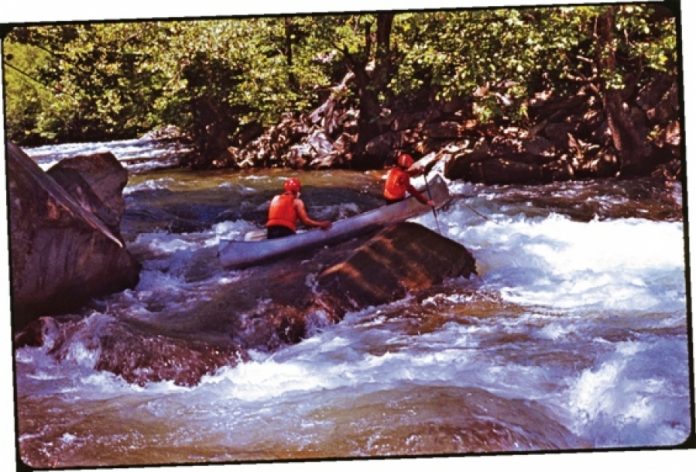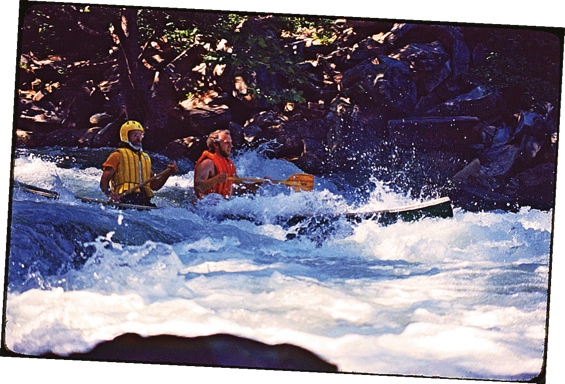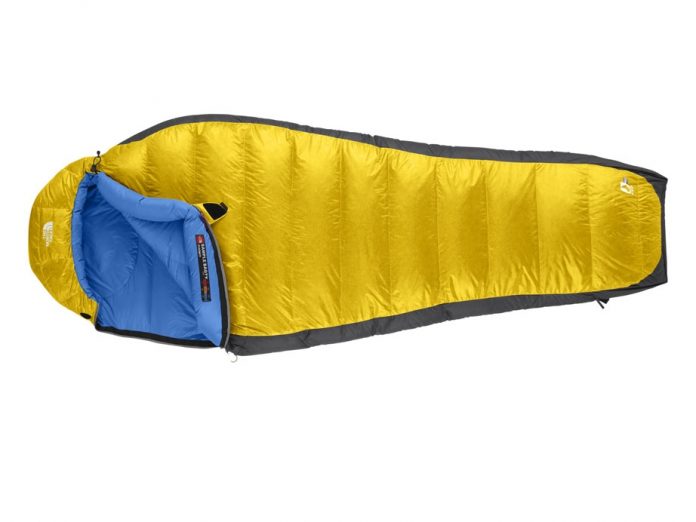Based in Penrith, England, Tiderace Sea Kayaks have rightfully become synonymous with performance planing-hulled, rough water play designs through their Xcite, Xtra and Xtreme lines.
Introduced in 2009, the Xplore series fills the needs of expedition-minded paddlers with four meticulously scaled sizes. They’re already gaining a reputation of their own, making some significant journeys like James Baxter’s 3,100-km trip down the coast of Norway.
Tiderace Xplore-S Specs
Length:17′ 5″
Width: 20″
Weight: 53 lbs
Paddler: 150–200 lbs
Dry storage volume: 194 L
MSRP: $4,449 Hardcore Layup / $5,049 Hardcore G Pro Layup
With a narrow, 20-inch beam, low foredeck and very low profile aft deck, the Xplore-S is the smallest size in the Xplore range. The lines have a refined quality that showcases the CAD (computer aided design) expertise of Tiderace designer and founder, Aled Williams. If Williams’ name sounds familiar, it should—he’s made memorable appearances cartwheeling a sea kayak and surfing the Falls of Lora in the This is the Sea DVD series.
The Xplore-S offers great speed with few sacrifices in mobility. Downwind, it is able to catch fast-moving wind waves without hitting the dreaded bow-wake—a common companion to the upswept prows of British kayaks— that signifies the final threshold of speed. This puts the limits of speed on the paddler where it belongs, rather than on the kayak.
Putting the Xplore-S on edge offers significantly increased mobility with solid and predictable results. With a shallow V hull and moderate chines, it hangs on edge very comfortably even in lumpy conditions. Pivoting 360 degrees on flat water requires little edge, and the kayak comes about quickly. Playing in short-period surf on the Great Lakes, there was no wobble when we heeled it over to the chine and spun around on the backs of the waves to get in position for the next ride.
Surfing any sea kayak on waves taller than three feet will inevitably result in pearling or broaching, but the Xplore-S gives plenty of warning prior to the event. With subtle shifts in weight, edging and rigorous application of directional rudder strokes, we could control broaching and fun nose-diving, or back off from a terminating ride.
The Xplore-S features Tiderace’s signature sloping deck at the cockpit, offering ample legroom for a more upright leg position when dynamic forward paddling, and the ability to grab with your knees when needed for edging and rolling.
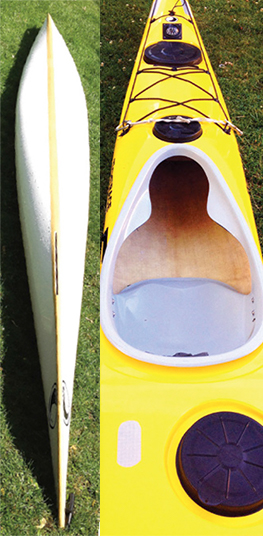
Tiderace has made a new industry standard with its composite construction technique of using biscuit-tin hull-to-deck seams that are then glassed inside and out. Williams has also pioneered the use of a resin-filled core between multiple layers of fiber material.
This creates boats that are stiff without being brittle—as I can attest after surfing bow-first into a pier and emerging unscathed—and sturdy without being excessively heavy. Consistency is Williams’ other great asset—we’ve never seen a Tiderace that didn’t display superlative construction.
Most expedition kayaks pay lip service to the LV market while intending to appeal to a much wider range of paddler weights and sizes. Tiderace has offered a rare thing, a truly scaled-down version of a fast and mobile expedition kayak that is at home on the open water, surfing the beach or ducking behind rocks and through arches.
Clever curves
Subtle changes in volume through the bow and stern give the Xplore-S both speed and maneuverability when edged.
All-day play
The molded seat pan and separate adjustable backband of the Xplore-S offer great comfort off the shelf, but both can be repositioned further forward or back to suit.
This article was first published in Adventure Kayak‘s Summer/Fall 2012 issue. Subscribe to Paddling Magazine’s print and digital editions here , or browse the archives here.
When it comes to sea kayaks, Kalamazoo, Michigan-based Keith Wikle is pretty fussy. It took an Xplore-S to pry him out of his vintage Nigel Foster Silhouette.




